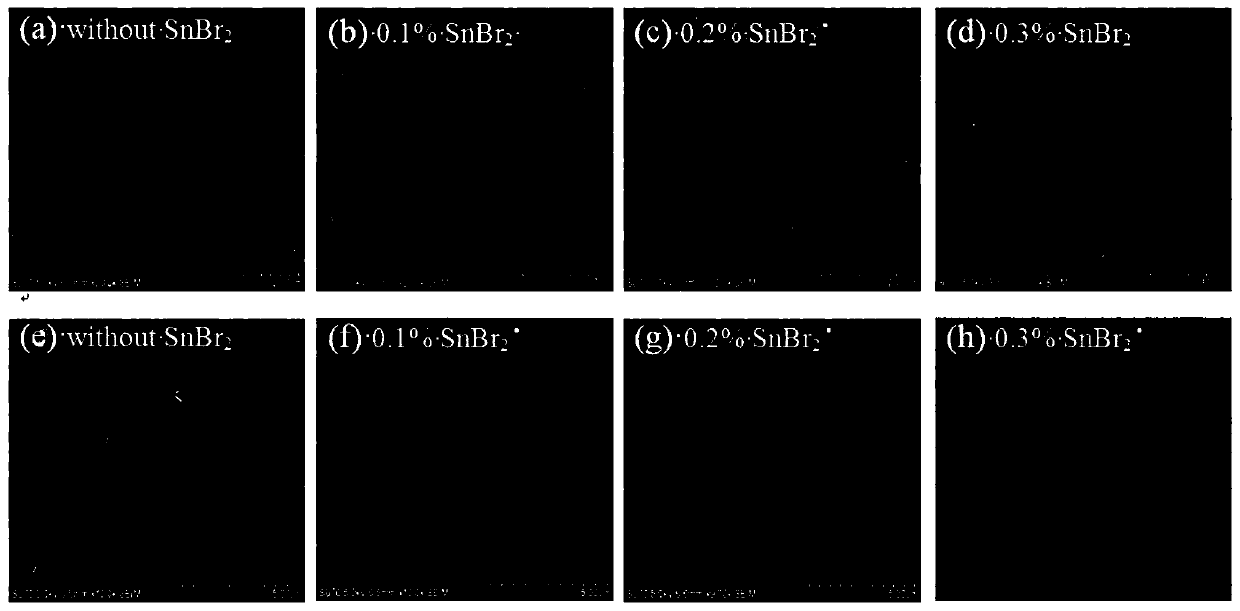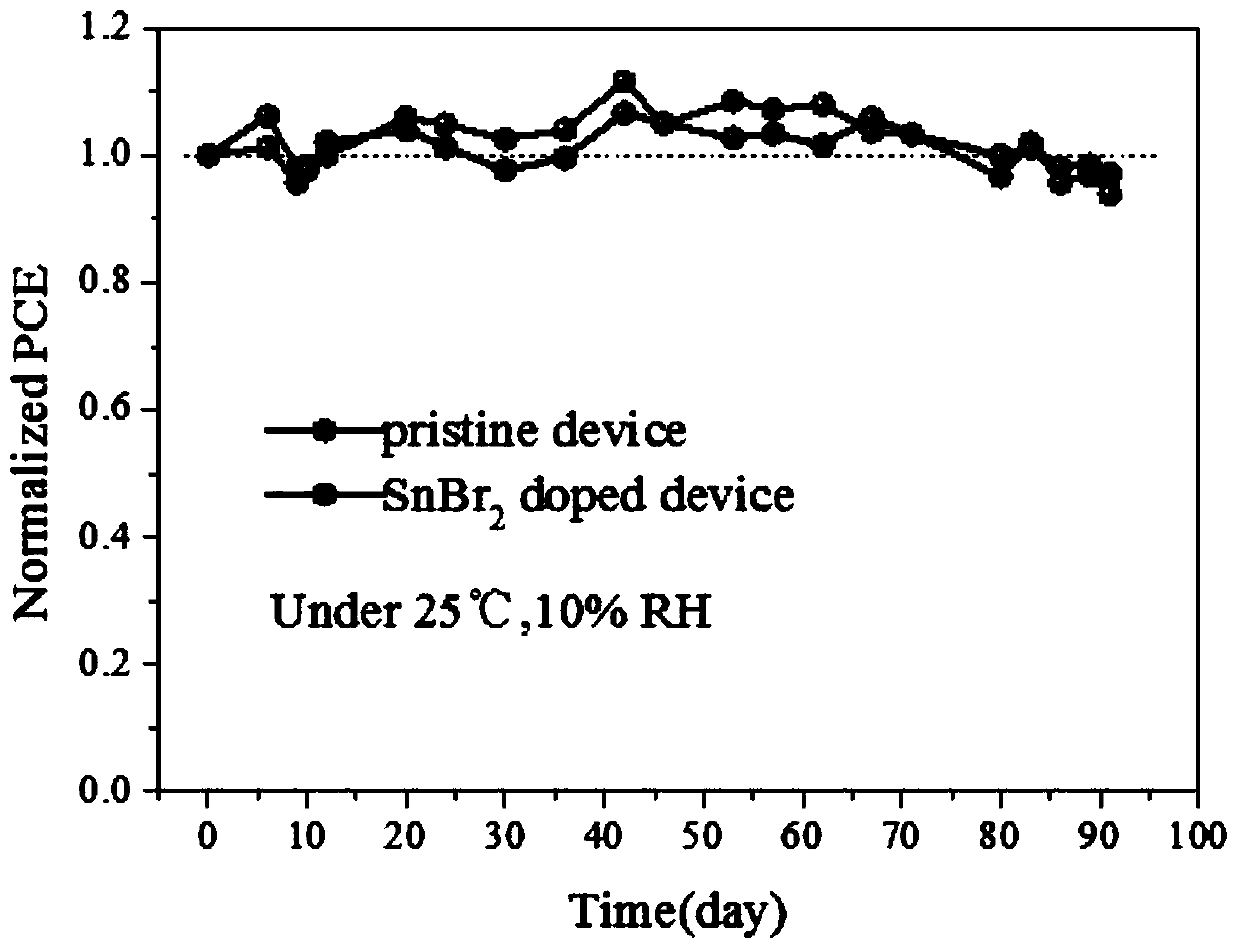Trace Sn-doped perovskite membrane repair preparation method and all-inorganic perovskite solar cell
A technology of perovskite and inorganic calcium, applied in circuits, electrical components, final product manufacturing, etc., can solve the problems of worrying about the quality of perovskite films, affecting the efficiency of interface charge extraction, and limitations.
- Summary
- Abstract
- Description
- Claims
- Application Information
AI Technical Summary
Problems solved by technology
Method used
Image
Examples
Embodiment 1
[0040] This embodiment is an all-inorganic perovskite solar cell, which sequentially includes a layered conductive glass layer, an electron transport layer, an all-inorganic perovskite layer and a carbon electrode layer.
[0041] Use the sol-gel method to coat a layer of dense titanium dioxide film on the conductive glass as an electron transport layer. After heat treatment at 400-450°C, perform titanium tetrachloride hydrolysis reaction treatment on the dense titanium dioxide film, and place it in a box-type resistance furnace after drying. Sintering at 450-500°C for later use.
[0042] Dissolve lead bromide and tin bromide in DMF solution to form base solution, the molar concentration of lead bromide is 1mol / L, and the molar concentration of tin bromide is 0.001mol / L. Cesium bromide was dissolved in DMSO to form a modification solution, and the molar concentration of cesium bromide was 1mol / L. The substrate solution was spin-coated onto the electron transport layer to form ...
Embodiment 2
[0046] This embodiment is an all-inorganic perovskite solar cell, which sequentially includes a layered conductive glass layer, an electron transport layer, an all-inorganic perovskite layer and a carbon electrode layer.
[0047] Use the sol-gel method to coat a layer of dense titanium dioxide film on the conductive glass as an electron transport layer. After heat treatment at 400-450°C, perform titanium tetrachloride hydrolysis reaction treatment on the dense titanium dioxide film, and place it in a box-type resistance furnace after drying. Sintering at 450-500°C for later use.
[0048] Dissolve lead bromide and tin bromide in the DMF solution to form a base solution, the molar concentration of lead bromide is 1mol / L, and the molar concentration of tin bromide is 0.002mol / L. Cesium bromide was dissolved in DMSO to form a modification solution, and the molar concentration of cesium bromide was 1mol / L. The substrate solution was spin-coated onto the electron transport layer to...
Embodiment 3
[0052] This embodiment is an all-inorganic perovskite solar cell, which sequentially includes a layered conductive glass layer, an electron transport layer, an all-inorganic perovskite layer and a carbon electrode layer.
[0053] Use the sol-gel method to coat a layer of dense titanium dioxide film on the conductive glass as an electron transport layer. After heat treatment at 400-450°C, perform titanium tetrachloride hydrolysis reaction treatment on the dense titanium dioxide film, and place it in a box-type resistance furnace after drying. Sintering at 450-500°C for later use.
[0054] Dissolve lead bromide and tin bromide in DMF solution to form base solution, the molar concentration of lead bromide is 1mol / L, and the molar concentration of tin bromide is 0.003mol / L. Cesium bromide was dissolved in DMSO to form a modification solution, and the molar concentration of cesium bromide was 1mol / L. The substrate solution was spin-coated onto the electron transport layer to form ...
PUM
 Login to View More
Login to View More Abstract
Description
Claims
Application Information
 Login to View More
Login to View More - R&D
- Intellectual Property
- Life Sciences
- Materials
- Tech Scout
- Unparalleled Data Quality
- Higher Quality Content
- 60% Fewer Hallucinations
Browse by: Latest US Patents, China's latest patents, Technical Efficacy Thesaurus, Application Domain, Technology Topic, Popular Technical Reports.
© 2025 PatSnap. All rights reserved.Legal|Privacy policy|Modern Slavery Act Transparency Statement|Sitemap|About US| Contact US: help@patsnap.com



